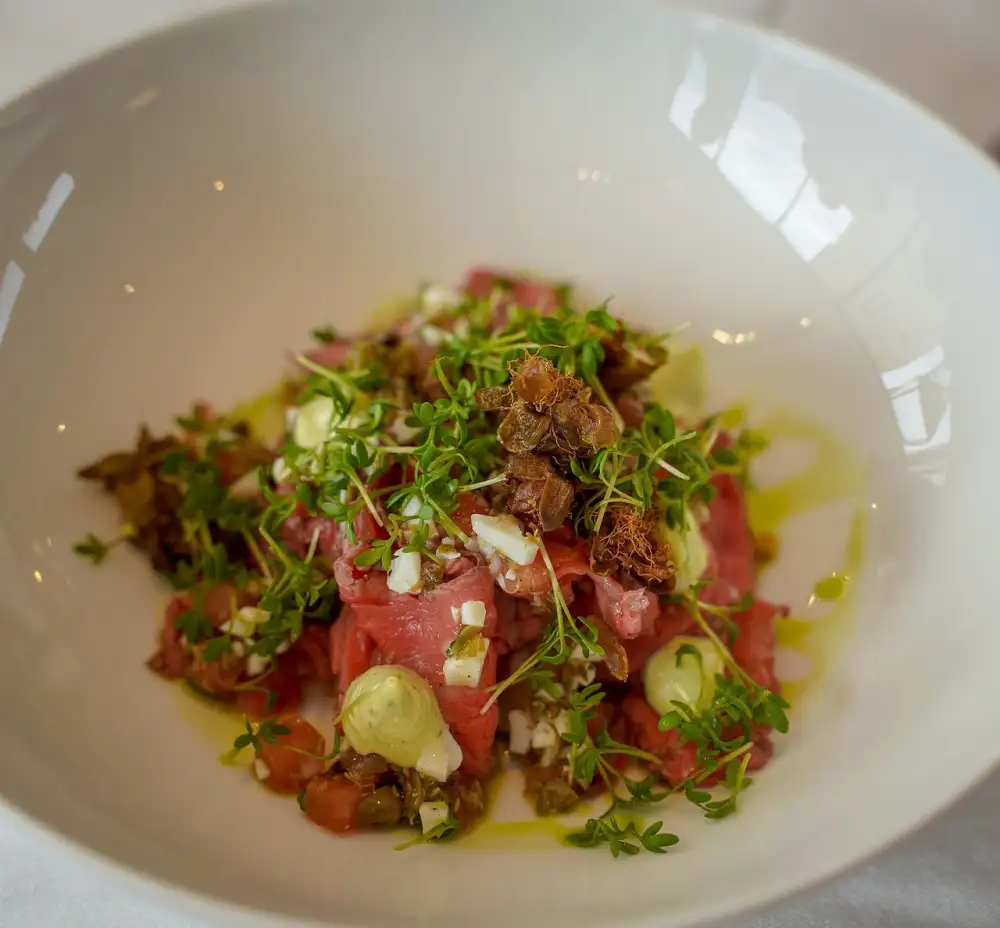Unleashing Flavor Excellence: Dive into the World of Remoulade Condiment Perfection

Remoulade, a classic French condiment, is a versatile and flavorful sauce that adds a zesty kick to dishes. Known for its creamy texture and tangy taste, remoulade is a popular accompaniment to seafood, meats, and vegetables. This beloved sauce is made with a base of mayonnaise or aioli mixed with mustard, capers, herbs, and spices. With its rich history and wide range of variations, remoulade has become a staple in many culinary traditions around the world. Join us on a journey to explore the depths of flavor excellence with this exquisite condiment - remoulade.
History and Origins of Remoulade
Remoulade, a versatile and flavorful condiment, has a rich history rooted in French cuisine. The origins of remoulade can be traced back to the 18th century in France, where it was initially created as a mayonnaise-based sauce flavored with herbs and capers. Over time, variations of remoulade emerged across different regions in Europe, each adding its own unique twist to the classic recipe. Today, remoulade is enjoyed worldwide and continues to be a staple in many culinary traditions, showcasing its enduring popularity and adaptability.
Key Ingredients in Remoulade
Remoulade is a classic French condiment known for its creamy texture and tangy flavor. The key ingredients in traditional remoulade include mayonnaise, Dijon mustard, capers, cornichons (small pickles), fresh herbs like parsley and chives, and aromatics such as garlic and shallots. Some variations may also include anchovies, tarragon, or paprika for an added depth of flavor. These ingredients come together to create a versatile sauce that can be used as a dip, dressing, or accompaniment to various dishes.
Variations and Regional Adaptations of Remoulade
Remoulade is a versatile condiment that has evolved over time, leading to various regional adaptations. In France, the classic French remoulade typically includes mayonnaise, mustard, capers, cornichons, and herbs like parsley and tarragon. In Denmark, their version known as "remoulade sauce" often features pickles, curry powder, and sometimes even apples for a slightly sweet twist.
In Louisiana Creole cuisine, particularly in New Orleans, remoulade takes on a spicy kick with the addition of Creole mustard, hot sauce, and paprika. This version pairs perfectly with seafood dishes like shrimp or crab cakes. Scandinavian countries also have their take on remoulade with ingredients such as hard-boiled eggs and beets.
These variations showcase the adaptability of remoulade to suit different palates and culinary traditions around the world. Whether you prefer it tangy and herbaceous or spicy and bold, there's a remoulade variation out there waiting to tantalize your taste buds.
Popular Dishes Featuring Remoulade
Remoulade is a versatile condiment that enhances the flavor of various dishes across different cuisines. In Louisiana, it is commonly used in the traditional dish, Shrimp Remoulade, where boiled shrimp are coated in a tangy and spicy remoulade sauce. Another classic dish featuring remoulade is the famous Po' Boy sandwich, typically filled with fried seafood such as oysters or shrimp and topped with a generous amount of remoulade for an extra kick of flavor. Additionally, remoulade is often paired with crab cakes, fried green tomatoes, and even served alongside French fries for a unique twist on a classic side dish. Its creamy texture and bold flavors make it a popular choice to elevate the taste of various dishes across the culinary world.
How to Make Remoulade at Home
To make Remoulade at home, start by combining mayonnaise, Dijon mustard, chopped pickles or cornichons, capers, fresh herbs like parsley and chives, minced garlic, and a splash of lemon juice in a bowl. Mix well until all ingredients are fully incorporated. Adjust the seasoning with salt and pepper to taste. For a spicier version, add a dash of hot sauce or cayenne pepper. Let the flavors meld together in the refrigerator for at least 30 minutes before serving. This homemade Remoulade will elevate any dish it accompanies with its tangy and flavorful profile.
Tips for Serving and Pairing Remoulade
When serving remoulade, consider it as a versatile condiment that can elevate a wide range of dishes. It pairs exceptionally well with seafood such as shrimp, crab cakes, and fried fish. It also complements roasted vegetables, sandwiches, and even grilled meats like chicken or steak. For a refreshing twist, try using remoulade as a dipping sauce for French fries or as a spread on burgers or wraps. Experiment with different textures and flavors to find the perfect match for this flavorful condiment.
Health Benefits of Remoulade Ingredients
Remoulade contains several ingredients that offer various health benefits. For instance, mayonnaise, a common base in remoulade, provides essential fatty acids and vitamins like E and K. Capers, another key ingredient, are rich in antioxidants that help reduce inflammation and lower the risk of chronic diseases. Additionally, mustard in remoulade contains turmeric which has anti-inflammatory properties and may aid digestion. The combination of these ingredients makes remoulade not only delicious but also potentially beneficial for overall health when consumed in moderation as part of a balanced diet.
In conclusion, remoulade is a versatile and flavorful condiment that adds a unique touch to a variety of dishes. Its rich history and regional adaptations showcase the diversity of flavors it can offer. By understanding the key ingredients and variations, one can appreciate the depth of this classic sauce. Whether enjoyed with seafood, sandwiches, or as a dipping sauce, remoulade is sure to elevate any meal with its tangy and creamy profile. Experimenting with homemade recipes allows for personalization and exploration of different flavor profiles. Embrace the world of remoulade and enhance your culinary adventures with this exquisite condiment.
Published: 23. 04. 2024
Category: Food



